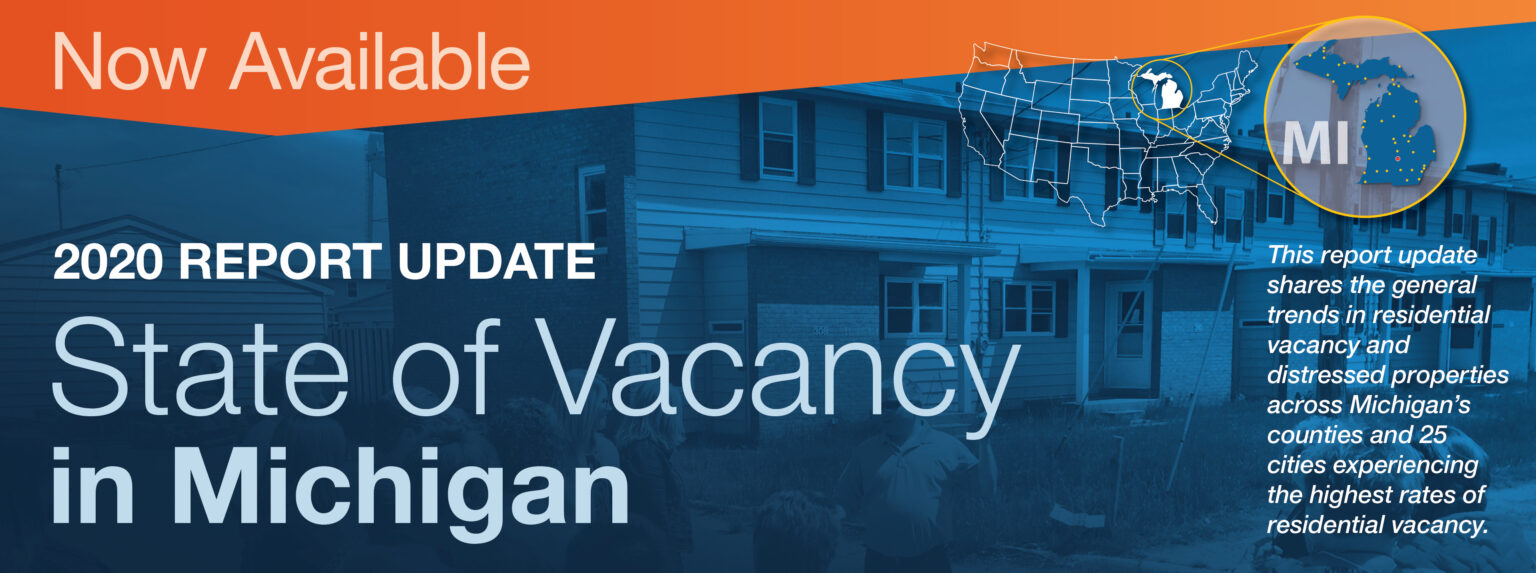New Report: Michigan Vacant Home Rates Down, But Rural and Urban Counties Suffer (Press Release)
August 25, 2020

State of Vacancy in Michigan 2020 Update Shares Residential Vacancy and Distressed Property Trends
FLINT, M.I. – August 25, 2020 – Today, the Center for Community Progress, America’s leading resource on issues of vacant, abandoned, and deteriorated (VAD) properties, shared the State of Vacancy in Michigan 2020 Update, a joint analysis with Data Driven Detroit on the state of vacant homes in Michigan.
“Michigan towns, cities, and counties have stood at the forefront of facing America’s economic downturns and their lasting negative impacts in housing markets and the lives of people.,” said Dr. Akilah Watkins-Butler, President and CEO of the Center for Community Progress.
“This 2020 update on the State of Vacancy in Michigan offers a critical look at how these communities have changed and creates a frame for measuring impact post-pandemic and as we receive new census data.”
Major Findings: Vacancy Decreases Outpace Population Growth by 300 than Percent
Data from 2010-18 shows that the number of vacant homes in Michigan declined four percent while the population increased .07 percent during the same period. In addition, the report shares that:
- While statewide residential vacancy is down, vacancy rates rose in 24 counties since 2010.
- Black households are disproportionately impacted by vacancy and 23 counties still have a vacancy rate above 8 percent.
- The rate of homeowners experiencing a housing cost burden is 20.1 percent; for renters it is more than 45 percent.
About the Report
The State of Vacancy in Michigan 2020 Update shares the general trends in residential vacancy and distressed properties across Michigan’s counties and 25 cities experiencing the highest rates of residential vacancy.
The Center for Community Progress and Data Driven Detroit collected and analyzed housing data from a variety of sources, including non-seasonal vacant residential units, property tax forfeiture and foreclosure information, and additional metrics. This report builds on the foundation and methodology from our 2014 report State of Vacancy in Michigan and is intended to inform further analysis as additional 2020 Census and other data become available.
To download the full report State of Vacancy in Michigan 2020, visit communityprogress.org/publications.
For media interviews and more information about the Center for Community Progress, email [email protected] or call (877) 542-4842 ext. 153.
###
About the Center for Community Progress
Since 2010, the Center for Community Progress has helped more than 300 communities transform vacant, abandoned, and deteriorated (VAD) properties into assets for neighbors and neighborhoods. Through offices in Michigan and Washington, D.C., Community Progress works to create a future where all people live in strong, healthy, just communities where widespread vacant properties no longer exist.
Recent Press Releases
Subscribe to join 14,000 community development leaders getting the latest resources from top experts on vacant property revitalization.
